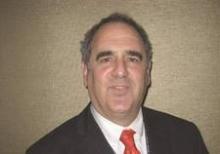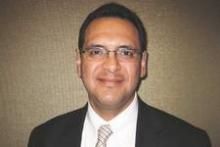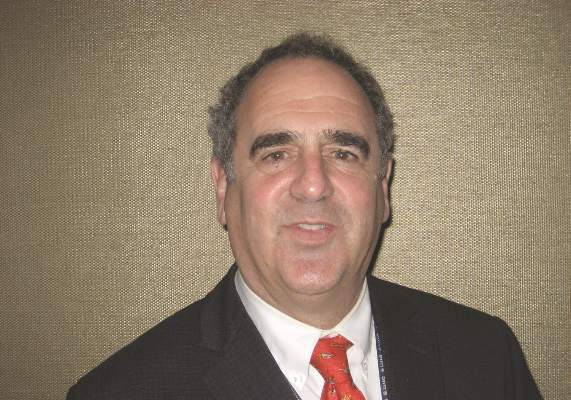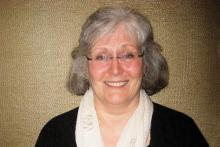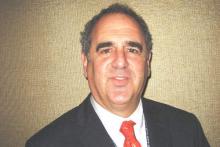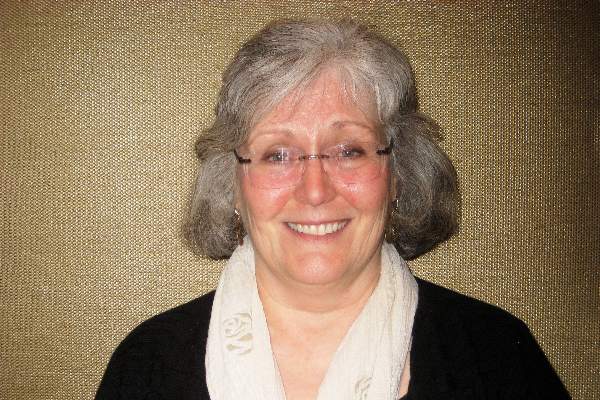User login
OsteoArthritis Research Society International (OARSI): World Congress on Osteoarthritis
OARSI: Predictors of crossover to surgery identified in patients with meniscal tears and OA
SEATTLE – Certain clinical factors help predict which patients with knee meniscal tears and osteoarthritis will abandon physical therapy (PT) for surgery, according to a study reported at the World Congress on Osteoarthritis.
Investigators led by Dr. Jeffrey N. Katz performed a secondary analysis of the randomized, controlled MeTeOR (Meniscal Tear in Osteoarthritis Research) trial, which compared PT with arthroscopic partial meniscectomy among 351 patients.
Results showed that patients assigned to PT had a 6%-8% higher risk of crossing over to surgery if they had greater pain, a shorter symptom duration, or weaker hamstrings. But four-fifths of patients obtained pain relief from surgery, regardless of whether they were initially assigned to it or crossed over to it.
“Patients with the most painful and acute presentations and those with hamstring weakness were most likely to cross over from PT to arthroscopic partial meniscectomy in this trial,” commented Dr. Katz, who is a professor of rheumatology at Harvard Medical School and codirector of the Brigham Spine Center at Brigham and Women’s Hospital, Boston. However, “the risk ratios were very modest, suggesting we have limited capacity to predict crossovers.”
“From a research standpoint, crossovers compromise trial interpretation, so targeting patients most likely to cross over with efforts to try to retain them in their original treatment arm would enhance the value of trials,” he added. “From a clinical standpoint, there appears to be no disadvantage in delaying surgery until a trial of physical therapy has been undertaken, and that conclusion underscores the advice from many of these trials suggesting that PT be offered as first-line therapy for patients with degenerative meniscal tears.”
In an interview, Dr. Rolando Espinosa Morales, session comoderator and chief of the rheumatology service at the National Institute of Rehabilitation, Mexico City, said, “The study shows us there are no perfect predictors [of crossover] in these patients,” and careful evaluation is needed to discern which patients really need surgery and which will fare well with PT alone.
“It’s a hot topic right now in the world,” he commented. “We really don’t want to use surgery in all patients; we need to use it in a [restricted] number of patients.”
During a question and answer period, session attendee Ewa M. Roos, Ph.D., University of Southern Denmark in Odense, said, “You showed a lot of patient-related factors that could potentially explain crossover, but what is the role of the surgeon? … Is there a fact that if you can, you will cross over?”
“I agree with what I think is your implicit suggestion that there probably is a large role for the surgeon. We looked at heterogeneity in crossovers among surgeons in the trial, and there is some variability. There are probably cultural differences as well,” Dr. Katz replied. “I think … the question is, how fully are patients consented to not receiving surgery?”
Participants in MeTeOR were aged 45 years or older and had a meniscal tear on magnetic resonance imaging with degenerative cartilage changes and at least one meniscal symptom. They were randomized evenly to a standardized PT regimen emphasizing strength and range of motion, or to arthroscopic partial meniscectomy accompanied by standardized PT.
Overall, 27% of patients in the PT arm crossed over to surgery within about 5 months, Dr. Katz reported at the meeting sponsored by the Osteoarthritis Research Society International.
Multivariate analyses showed that patients initially assigned to PT were more likely to cross over to surgery if they had greater pain, scoring 40 or higher on the 100-point Western Ontario and McMaster Universities Osteoarthritis Index (WOMAC) pain scale (relative risk, 1.08); had experienced symptoms for less than a year (1.07); or had hamstring strength of less than 30 pounds (1.06).
However, the rate of treatment success, defined as an improvement of at least 10 points on the 100-point Knee Injury and Osteoarthritis Outcome Score (KOOS) at 6 months, was similarly high for the patients who were randomized to and received surgery (80%) and the patients who were randomized to PT but crossed over to surgery (81%).
The trial had several limitations, according to Dr. Katz. “From the standpoint of external validity, trial samples are not necessarily generalizable as we know. And with respect to internal validity, our comparison of immediate and delayed arthroscopic partial meniscectomy was post randomization, and the groups are not necessarily balanced,” he said.
Dr. Katz disclosed no relevant conflicts of interest.
SEATTLE – Certain clinical factors help predict which patients with knee meniscal tears and osteoarthritis will abandon physical therapy (PT) for surgery, according to a study reported at the World Congress on Osteoarthritis.
Investigators led by Dr. Jeffrey N. Katz performed a secondary analysis of the randomized, controlled MeTeOR (Meniscal Tear in Osteoarthritis Research) trial, which compared PT with arthroscopic partial meniscectomy among 351 patients.
Results showed that patients assigned to PT had a 6%-8% higher risk of crossing over to surgery if they had greater pain, a shorter symptom duration, or weaker hamstrings. But four-fifths of patients obtained pain relief from surgery, regardless of whether they were initially assigned to it or crossed over to it.
“Patients with the most painful and acute presentations and those with hamstring weakness were most likely to cross over from PT to arthroscopic partial meniscectomy in this trial,” commented Dr. Katz, who is a professor of rheumatology at Harvard Medical School and codirector of the Brigham Spine Center at Brigham and Women’s Hospital, Boston. However, “the risk ratios were very modest, suggesting we have limited capacity to predict crossovers.”
“From a research standpoint, crossovers compromise trial interpretation, so targeting patients most likely to cross over with efforts to try to retain them in their original treatment arm would enhance the value of trials,” he added. “From a clinical standpoint, there appears to be no disadvantage in delaying surgery until a trial of physical therapy has been undertaken, and that conclusion underscores the advice from many of these trials suggesting that PT be offered as first-line therapy for patients with degenerative meniscal tears.”
In an interview, Dr. Rolando Espinosa Morales, session comoderator and chief of the rheumatology service at the National Institute of Rehabilitation, Mexico City, said, “The study shows us there are no perfect predictors [of crossover] in these patients,” and careful evaluation is needed to discern which patients really need surgery and which will fare well with PT alone.
“It’s a hot topic right now in the world,” he commented. “We really don’t want to use surgery in all patients; we need to use it in a [restricted] number of patients.”
During a question and answer period, session attendee Ewa M. Roos, Ph.D., University of Southern Denmark in Odense, said, “You showed a lot of patient-related factors that could potentially explain crossover, but what is the role of the surgeon? … Is there a fact that if you can, you will cross over?”
“I agree with what I think is your implicit suggestion that there probably is a large role for the surgeon. We looked at heterogeneity in crossovers among surgeons in the trial, and there is some variability. There are probably cultural differences as well,” Dr. Katz replied. “I think … the question is, how fully are patients consented to not receiving surgery?”
Participants in MeTeOR were aged 45 years or older and had a meniscal tear on magnetic resonance imaging with degenerative cartilage changes and at least one meniscal symptom. They were randomized evenly to a standardized PT regimen emphasizing strength and range of motion, or to arthroscopic partial meniscectomy accompanied by standardized PT.
Overall, 27% of patients in the PT arm crossed over to surgery within about 5 months, Dr. Katz reported at the meeting sponsored by the Osteoarthritis Research Society International.
Multivariate analyses showed that patients initially assigned to PT were more likely to cross over to surgery if they had greater pain, scoring 40 or higher on the 100-point Western Ontario and McMaster Universities Osteoarthritis Index (WOMAC) pain scale (relative risk, 1.08); had experienced symptoms for less than a year (1.07); or had hamstring strength of less than 30 pounds (1.06).
However, the rate of treatment success, defined as an improvement of at least 10 points on the 100-point Knee Injury and Osteoarthritis Outcome Score (KOOS) at 6 months, was similarly high for the patients who were randomized to and received surgery (80%) and the patients who were randomized to PT but crossed over to surgery (81%).
The trial had several limitations, according to Dr. Katz. “From the standpoint of external validity, trial samples are not necessarily generalizable as we know. And with respect to internal validity, our comparison of immediate and delayed arthroscopic partial meniscectomy was post randomization, and the groups are not necessarily balanced,” he said.
Dr. Katz disclosed no relevant conflicts of interest.
SEATTLE – Certain clinical factors help predict which patients with knee meniscal tears and osteoarthritis will abandon physical therapy (PT) for surgery, according to a study reported at the World Congress on Osteoarthritis.
Investigators led by Dr. Jeffrey N. Katz performed a secondary analysis of the randomized, controlled MeTeOR (Meniscal Tear in Osteoarthritis Research) trial, which compared PT with arthroscopic partial meniscectomy among 351 patients.
Results showed that patients assigned to PT had a 6%-8% higher risk of crossing over to surgery if they had greater pain, a shorter symptom duration, or weaker hamstrings. But four-fifths of patients obtained pain relief from surgery, regardless of whether they were initially assigned to it or crossed over to it.
“Patients with the most painful and acute presentations and those with hamstring weakness were most likely to cross over from PT to arthroscopic partial meniscectomy in this trial,” commented Dr. Katz, who is a professor of rheumatology at Harvard Medical School and codirector of the Brigham Spine Center at Brigham and Women’s Hospital, Boston. However, “the risk ratios were very modest, suggesting we have limited capacity to predict crossovers.”
“From a research standpoint, crossovers compromise trial interpretation, so targeting patients most likely to cross over with efforts to try to retain them in their original treatment arm would enhance the value of trials,” he added. “From a clinical standpoint, there appears to be no disadvantage in delaying surgery until a trial of physical therapy has been undertaken, and that conclusion underscores the advice from many of these trials suggesting that PT be offered as first-line therapy for patients with degenerative meniscal tears.”
In an interview, Dr. Rolando Espinosa Morales, session comoderator and chief of the rheumatology service at the National Institute of Rehabilitation, Mexico City, said, “The study shows us there are no perfect predictors [of crossover] in these patients,” and careful evaluation is needed to discern which patients really need surgery and which will fare well with PT alone.
“It’s a hot topic right now in the world,” he commented. “We really don’t want to use surgery in all patients; we need to use it in a [restricted] number of patients.”
During a question and answer period, session attendee Ewa M. Roos, Ph.D., University of Southern Denmark in Odense, said, “You showed a lot of patient-related factors that could potentially explain crossover, but what is the role of the surgeon? … Is there a fact that if you can, you will cross over?”
“I agree with what I think is your implicit suggestion that there probably is a large role for the surgeon. We looked at heterogeneity in crossovers among surgeons in the trial, and there is some variability. There are probably cultural differences as well,” Dr. Katz replied. “I think … the question is, how fully are patients consented to not receiving surgery?”
Participants in MeTeOR were aged 45 years or older and had a meniscal tear on magnetic resonance imaging with degenerative cartilage changes and at least one meniscal symptom. They were randomized evenly to a standardized PT regimen emphasizing strength and range of motion, or to arthroscopic partial meniscectomy accompanied by standardized PT.
Overall, 27% of patients in the PT arm crossed over to surgery within about 5 months, Dr. Katz reported at the meeting sponsored by the Osteoarthritis Research Society International.
Multivariate analyses showed that patients initially assigned to PT were more likely to cross over to surgery if they had greater pain, scoring 40 or higher on the 100-point Western Ontario and McMaster Universities Osteoarthritis Index (WOMAC) pain scale (relative risk, 1.08); had experienced symptoms for less than a year (1.07); or had hamstring strength of less than 30 pounds (1.06).
However, the rate of treatment success, defined as an improvement of at least 10 points on the 100-point Knee Injury and Osteoarthritis Outcome Score (KOOS) at 6 months, was similarly high for the patients who were randomized to and received surgery (80%) and the patients who were randomized to PT but crossed over to surgery (81%).
The trial had several limitations, according to Dr. Katz. “From the standpoint of external validity, trial samples are not necessarily generalizable as we know. And with respect to internal validity, our comparison of immediate and delayed arthroscopic partial meniscectomy was post randomization, and the groups are not necessarily balanced,” he said.
Dr. Katz disclosed no relevant conflicts of interest.
AT OARSI 2015
Key clinical point: Clinical factors can help identify patients with knee meniscal tears and osteoarthritis who will eventually opt for arthroscopic partial meniscectomy.
Major finding: The risk of crossing over from PT to surgery was 6%-8% higher for patients who had greater pain, shorter symptom duration, or hamstring weakness.
Data source: An analysis of 351 patients with knee meniscal tears and osteoarthritis in a randomized trial of surgery vs. PT.
Disclosures: Dr. Katz disclosed no relevant conflicts of interest.
OARSI: Bisphosphonate users less likely to undergo knee replacement
SEATTLE – Women with knee osteoarthritis who took bisphosphonates were 27% less likely to undergo joint replacement surgery than were women who didn’t take bisphosphonates in a U.K. cohort study of 3,928 propensity-matched users and nonusers, according to a report at the World Congress on Osteoarthritis.
“In older women with incident knee osteoarthritis, incident bisphosphonate use may be associated with lower risk of knee replacement than in nonusers,” said Dr. Tuhina Neogi of Boston University.
Dr. Neogi and her colleagues used data from The Health Improvement Network (THIN), a U.K. database of primary care patients, to identify women aged 50-89 years who received a diagnosis of knee osteoarthritis between 2003 and 2012. Patients were excluded if they were poor surgical candidates or were taking disease-modifying antirheumatic drugs, biologic agents, or other bone-active agents.
The researchers compared 1,964 women who subsequently started bisphosphonate therapy with 1,964 propensity score–matched women who did not. In 85% of the former, the bisphosphonate was alendronate, marketed as Fosamax in the United States.
During a mean follow-up of 3 years, the incidence rate of knee replacement was 21 cases per 1,000 patient-years among bisphosphonate users and 29 cases per 1,000 patient-years among nonusers, according to results reported at the meeting, which was sponsored by Osteoarthritis Research Society International.
In adjusted analyses, users had a significantly lower relative risk of undergoing this surgery (hazard ratio, 0.73), reported Dr. Neogi, who disclosed that she had no relevant conflicts of interest.
Sensitivity analyses showed an even stronger association in a separate cohort of patients matched by age, body mass index, and the duration of osteoarthritis (hazard ratio, 0.33) and a nonsignificant benefit when bisphosphonate users were instead compared against an active user group of women who initiated any other bone-modulating therapy.
“Now of course this is observational data from electronic medical records, so we cannot rule out the potential for residual bias,” she acknowledged. “Our sensitivity analyses were fairly consistent and provide some reassurance, but nonetheless, the magnitude of effect is still likely to be biased due to residual confounding.”
In an interview, Dr. Rik Lories, one of the session’s comoderators and a professor at the University of Leuven, Belgium, said that the study “is still far from practice changing. But the great thing about this research is that we are starting to split up what you would call the osteoarthritic diseases, taking osteoarthritis as the outcome [and showing] the underlying mechanisms of the different phenotypes being different.”
Dr. Neogi noted that subchrondral bone changes are prominent in knee osteoarthritis and that mechanical factors play a central role in the disease. At the same time, findings of trials of antiresorptive agents, including bisphosphonates, in knee osteoarthritis have been conflicting.
“There are a number of limitations to this study, including the fact that The Health Improvement Network does not have bone mineral density results. We tried to address this by accounting for a prior diagnosis of osteoporosis, fracture history, potential risk for fractures, body mass index, age, number of bone mineral density tests ordered, et cetera,” Dr. Neogi said. “Another limitation is that of the secular trends in use of bone-modulating agents over this time frame, and that precluded robust evaluation of the active user comparator analysis.
“Bone mineral density is still a major potential confounder here that can’t be adequately addressed,” she acknowledged.
SEATTLE – Women with knee osteoarthritis who took bisphosphonates were 27% less likely to undergo joint replacement surgery than were women who didn’t take bisphosphonates in a U.K. cohort study of 3,928 propensity-matched users and nonusers, according to a report at the World Congress on Osteoarthritis.
“In older women with incident knee osteoarthritis, incident bisphosphonate use may be associated with lower risk of knee replacement than in nonusers,” said Dr. Tuhina Neogi of Boston University.
Dr. Neogi and her colleagues used data from The Health Improvement Network (THIN), a U.K. database of primary care patients, to identify women aged 50-89 years who received a diagnosis of knee osteoarthritis between 2003 and 2012. Patients were excluded if they were poor surgical candidates or were taking disease-modifying antirheumatic drugs, biologic agents, or other bone-active agents.
The researchers compared 1,964 women who subsequently started bisphosphonate therapy with 1,964 propensity score–matched women who did not. In 85% of the former, the bisphosphonate was alendronate, marketed as Fosamax in the United States.
During a mean follow-up of 3 years, the incidence rate of knee replacement was 21 cases per 1,000 patient-years among bisphosphonate users and 29 cases per 1,000 patient-years among nonusers, according to results reported at the meeting, which was sponsored by Osteoarthritis Research Society International.
In adjusted analyses, users had a significantly lower relative risk of undergoing this surgery (hazard ratio, 0.73), reported Dr. Neogi, who disclosed that she had no relevant conflicts of interest.
Sensitivity analyses showed an even stronger association in a separate cohort of patients matched by age, body mass index, and the duration of osteoarthritis (hazard ratio, 0.33) and a nonsignificant benefit when bisphosphonate users were instead compared against an active user group of women who initiated any other bone-modulating therapy.
“Now of course this is observational data from electronic medical records, so we cannot rule out the potential for residual bias,” she acknowledged. “Our sensitivity analyses were fairly consistent and provide some reassurance, but nonetheless, the magnitude of effect is still likely to be biased due to residual confounding.”
In an interview, Dr. Rik Lories, one of the session’s comoderators and a professor at the University of Leuven, Belgium, said that the study “is still far from practice changing. But the great thing about this research is that we are starting to split up what you would call the osteoarthritic diseases, taking osteoarthritis as the outcome [and showing] the underlying mechanisms of the different phenotypes being different.”
Dr. Neogi noted that subchrondral bone changes are prominent in knee osteoarthritis and that mechanical factors play a central role in the disease. At the same time, findings of trials of antiresorptive agents, including bisphosphonates, in knee osteoarthritis have been conflicting.
“There are a number of limitations to this study, including the fact that The Health Improvement Network does not have bone mineral density results. We tried to address this by accounting for a prior diagnosis of osteoporosis, fracture history, potential risk for fractures, body mass index, age, number of bone mineral density tests ordered, et cetera,” Dr. Neogi said. “Another limitation is that of the secular trends in use of bone-modulating agents over this time frame, and that precluded robust evaluation of the active user comparator analysis.
“Bone mineral density is still a major potential confounder here that can’t be adequately addressed,” she acknowledged.
SEATTLE – Women with knee osteoarthritis who took bisphosphonates were 27% less likely to undergo joint replacement surgery than were women who didn’t take bisphosphonates in a U.K. cohort study of 3,928 propensity-matched users and nonusers, according to a report at the World Congress on Osteoarthritis.
“In older women with incident knee osteoarthritis, incident bisphosphonate use may be associated with lower risk of knee replacement than in nonusers,” said Dr. Tuhina Neogi of Boston University.
Dr. Neogi and her colleagues used data from The Health Improvement Network (THIN), a U.K. database of primary care patients, to identify women aged 50-89 years who received a diagnosis of knee osteoarthritis between 2003 and 2012. Patients were excluded if they were poor surgical candidates or were taking disease-modifying antirheumatic drugs, biologic agents, or other bone-active agents.
The researchers compared 1,964 women who subsequently started bisphosphonate therapy with 1,964 propensity score–matched women who did not. In 85% of the former, the bisphosphonate was alendronate, marketed as Fosamax in the United States.
During a mean follow-up of 3 years, the incidence rate of knee replacement was 21 cases per 1,000 patient-years among bisphosphonate users and 29 cases per 1,000 patient-years among nonusers, according to results reported at the meeting, which was sponsored by Osteoarthritis Research Society International.
In adjusted analyses, users had a significantly lower relative risk of undergoing this surgery (hazard ratio, 0.73), reported Dr. Neogi, who disclosed that she had no relevant conflicts of interest.
Sensitivity analyses showed an even stronger association in a separate cohort of patients matched by age, body mass index, and the duration of osteoarthritis (hazard ratio, 0.33) and a nonsignificant benefit when bisphosphonate users were instead compared against an active user group of women who initiated any other bone-modulating therapy.
“Now of course this is observational data from electronic medical records, so we cannot rule out the potential for residual bias,” she acknowledged. “Our sensitivity analyses were fairly consistent and provide some reassurance, but nonetheless, the magnitude of effect is still likely to be biased due to residual confounding.”
In an interview, Dr. Rik Lories, one of the session’s comoderators and a professor at the University of Leuven, Belgium, said that the study “is still far from practice changing. But the great thing about this research is that we are starting to split up what you would call the osteoarthritic diseases, taking osteoarthritis as the outcome [and showing] the underlying mechanisms of the different phenotypes being different.”
Dr. Neogi noted that subchrondral bone changes are prominent in knee osteoarthritis and that mechanical factors play a central role in the disease. At the same time, findings of trials of antiresorptive agents, including bisphosphonates, in knee osteoarthritis have been conflicting.
“There are a number of limitations to this study, including the fact that The Health Improvement Network does not have bone mineral density results. We tried to address this by accounting for a prior diagnosis of osteoporosis, fracture history, potential risk for fractures, body mass index, age, number of bone mineral density tests ordered, et cetera,” Dr. Neogi said. “Another limitation is that of the secular trends in use of bone-modulating agents over this time frame, and that precluded robust evaluation of the active user comparator analysis.
“Bone mineral density is still a major potential confounder here that can’t be adequately addressed,” she acknowledged.
AT OARSI 2015
Key clinical point: Bisphosphonate use by women with knee arthritis was associated with a reduced rate of knee surgery.
Major finding: Women who began using bisphosphonates had a 27% lower risk of total knee replacement surgery.
Data source: A cohort study of 3,928 women aged 50-89 who had knee osteoarthritis.
Disclosures: Dr. Neogi disclosed that she had no relevant conflicts of interest.
OARSI: Model helps predict readmission after joint replacement
SEATTLE – Adding clinical factors to a commonly used risk model improves by about 20% the prediction of which patients will be readmitted after undergoing total joint replacement surgery, new data show.
The new, combined model employs diagnostic codes and a variety of clinical factors, such as preoperative patient-reported measures – emotional status assessed with the mental component score of the 12-item Short Form Health Survey, moderate to severe pain in other weight-bearing joints (the contralateral joint, the hips or knees, and low back), and history of smoking – and the Charlson comorbidity index.
Investigators led by Dr. Patricia D. Franklin, a professor in the department of orthopedics and physical rehabilitation, University of Massachusetts, Worcester, set out to improve on the Centers for Medicare & Medicaid (CMS) risk prediction model for 30-day readmission. Rates of readmission using the model are publicly reported as an indicator of the quality of care at hospitals.
“Analyses are described as risk adjusted, implying that the remaining outcome variation is due to variation in quality of care,” she told attendees of the World Congress on Osteoarthritis. “The CMS risk adjustment model, while expertly developed, was limited to the billing and diagnosis data that were available to them and for patients over 65 years of age.”
The researchers tested the model using data from FORCE-TJR (Function and Outcomes Research for Comparative Effectiveness in Total Joint Replacement and Quality Improvement), the first national total joint replacement registry. Analyses were based on 2,560 patients aged 65 years or older who underwent total knee or hip replacement during 2011 and 2012.
Overall, 4.7% of the patients were readmitted within 30 days. About one-third of the readmissions were for implant-related issues, while the rest were due to complications of a major surgery in older patients with comorbidities, according to Dr. Franklin, who disclosed that she has received investigator-initiated research awards from Zimmer and Biomet.
In multivariate analysis, discrimination of patients having a readmission with the combined model was superior to that with the model based on diagnostic codes alone (c-statistic, 0.75 vs. 0.64), she reported at the meeting sponsored by the Osteoarthritis Research Society International.
“We believe that in the combined risk-adjustment model … the key predictors were indeed older age and gender and that list of ICD codes. However, the addition of medical and musculoskeletal comorbidities – in particular, moderate and severe pain in other weight-bearing joints – was important to the success,” Dr. Franklin commented, noting that the findings will be validated using 2013 registry data.
“We have been advising total joint replacement surgeons to collect these musculoskeletal factors in a systematic way so that they can be included in these future analyses. We believe it would be wise to integrate clinician-defined and -reported risk factors before public reporting,” she concluded.
Session attendee Dr. Jeffrey N. Katz, a professor at Harvard Medical School and codirector of the Brigham Spine Center at Brigham and Women’s Hospital, Boston, wondered whether pain in the other knee is a proxy for the severity and systemic nature of the osteoarthritis in these patients.
Identifying the real risk factors at play will be important, Dr. Katz said, adding, “I think we see this a lot in risk models. ... and addressing the proxy may not address the underlying issue.”
“I’m just very afraid of the law of unintended consequences” of risk models potentially being used to deny some patients surgery, commented session comoderator Dr. Nigel Arden, professor of rheumatology at the University of Oxford, England.
“A lot of the risk factors you identified were not obviously reversible,” Dr. Arden commented. “So are these people going to get prehab, or would you operate but do lots of extensive postoperative rehab? Or is this going to be a patient decision aid?”
The main aims of the research were to better ensure that the model was truly reflecting surgical care and to provide surgeons with information for planning and counseling patients, according to Dr. Franklin.
“I think patients should be informed what their risk is. … Average readmission rates or mortality rates don’t inform individuals,” she added. “So our goal actually is to begin to have some strategies to parse out subgroups of patients at greater or lesser risk for complications, and for benefits from the surgery.”
SEATTLE – Adding clinical factors to a commonly used risk model improves by about 20% the prediction of which patients will be readmitted after undergoing total joint replacement surgery, new data show.
The new, combined model employs diagnostic codes and a variety of clinical factors, such as preoperative patient-reported measures – emotional status assessed with the mental component score of the 12-item Short Form Health Survey, moderate to severe pain in other weight-bearing joints (the contralateral joint, the hips or knees, and low back), and history of smoking – and the Charlson comorbidity index.
Investigators led by Dr. Patricia D. Franklin, a professor in the department of orthopedics and physical rehabilitation, University of Massachusetts, Worcester, set out to improve on the Centers for Medicare & Medicaid (CMS) risk prediction model for 30-day readmission. Rates of readmission using the model are publicly reported as an indicator of the quality of care at hospitals.
“Analyses are described as risk adjusted, implying that the remaining outcome variation is due to variation in quality of care,” she told attendees of the World Congress on Osteoarthritis. “The CMS risk adjustment model, while expertly developed, was limited to the billing and diagnosis data that were available to them and for patients over 65 years of age.”
The researchers tested the model using data from FORCE-TJR (Function and Outcomes Research for Comparative Effectiveness in Total Joint Replacement and Quality Improvement), the first national total joint replacement registry. Analyses were based on 2,560 patients aged 65 years or older who underwent total knee or hip replacement during 2011 and 2012.
Overall, 4.7% of the patients were readmitted within 30 days. About one-third of the readmissions were for implant-related issues, while the rest were due to complications of a major surgery in older patients with comorbidities, according to Dr. Franklin, who disclosed that she has received investigator-initiated research awards from Zimmer and Biomet.
In multivariate analysis, discrimination of patients having a readmission with the combined model was superior to that with the model based on diagnostic codes alone (c-statistic, 0.75 vs. 0.64), she reported at the meeting sponsored by the Osteoarthritis Research Society International.
“We believe that in the combined risk-adjustment model … the key predictors were indeed older age and gender and that list of ICD codes. However, the addition of medical and musculoskeletal comorbidities – in particular, moderate and severe pain in other weight-bearing joints – was important to the success,” Dr. Franklin commented, noting that the findings will be validated using 2013 registry data.
“We have been advising total joint replacement surgeons to collect these musculoskeletal factors in a systematic way so that they can be included in these future analyses. We believe it would be wise to integrate clinician-defined and -reported risk factors before public reporting,” she concluded.
Session attendee Dr. Jeffrey N. Katz, a professor at Harvard Medical School and codirector of the Brigham Spine Center at Brigham and Women’s Hospital, Boston, wondered whether pain in the other knee is a proxy for the severity and systemic nature of the osteoarthritis in these patients.
Identifying the real risk factors at play will be important, Dr. Katz said, adding, “I think we see this a lot in risk models. ... and addressing the proxy may not address the underlying issue.”
“I’m just very afraid of the law of unintended consequences” of risk models potentially being used to deny some patients surgery, commented session comoderator Dr. Nigel Arden, professor of rheumatology at the University of Oxford, England.
“A lot of the risk factors you identified were not obviously reversible,” Dr. Arden commented. “So are these people going to get prehab, or would you operate but do lots of extensive postoperative rehab? Or is this going to be a patient decision aid?”
The main aims of the research were to better ensure that the model was truly reflecting surgical care and to provide surgeons with information for planning and counseling patients, according to Dr. Franklin.
“I think patients should be informed what their risk is. … Average readmission rates or mortality rates don’t inform individuals,” she added. “So our goal actually is to begin to have some strategies to parse out subgroups of patients at greater or lesser risk for complications, and for benefits from the surgery.”
SEATTLE – Adding clinical factors to a commonly used risk model improves by about 20% the prediction of which patients will be readmitted after undergoing total joint replacement surgery, new data show.
The new, combined model employs diagnostic codes and a variety of clinical factors, such as preoperative patient-reported measures – emotional status assessed with the mental component score of the 12-item Short Form Health Survey, moderate to severe pain in other weight-bearing joints (the contralateral joint, the hips or knees, and low back), and history of smoking – and the Charlson comorbidity index.
Investigators led by Dr. Patricia D. Franklin, a professor in the department of orthopedics and physical rehabilitation, University of Massachusetts, Worcester, set out to improve on the Centers for Medicare & Medicaid (CMS) risk prediction model for 30-day readmission. Rates of readmission using the model are publicly reported as an indicator of the quality of care at hospitals.
“Analyses are described as risk adjusted, implying that the remaining outcome variation is due to variation in quality of care,” she told attendees of the World Congress on Osteoarthritis. “The CMS risk adjustment model, while expertly developed, was limited to the billing and diagnosis data that were available to them and for patients over 65 years of age.”
The researchers tested the model using data from FORCE-TJR (Function and Outcomes Research for Comparative Effectiveness in Total Joint Replacement and Quality Improvement), the first national total joint replacement registry. Analyses were based on 2,560 patients aged 65 years or older who underwent total knee or hip replacement during 2011 and 2012.
Overall, 4.7% of the patients were readmitted within 30 days. About one-third of the readmissions were for implant-related issues, while the rest were due to complications of a major surgery in older patients with comorbidities, according to Dr. Franklin, who disclosed that she has received investigator-initiated research awards from Zimmer and Biomet.
In multivariate analysis, discrimination of patients having a readmission with the combined model was superior to that with the model based on diagnostic codes alone (c-statistic, 0.75 vs. 0.64), she reported at the meeting sponsored by the Osteoarthritis Research Society International.
“We believe that in the combined risk-adjustment model … the key predictors were indeed older age and gender and that list of ICD codes. However, the addition of medical and musculoskeletal comorbidities – in particular, moderate and severe pain in other weight-bearing joints – was important to the success,” Dr. Franklin commented, noting that the findings will be validated using 2013 registry data.
“We have been advising total joint replacement surgeons to collect these musculoskeletal factors in a systematic way so that they can be included in these future analyses. We believe it would be wise to integrate clinician-defined and -reported risk factors before public reporting,” she concluded.
Session attendee Dr. Jeffrey N. Katz, a professor at Harvard Medical School and codirector of the Brigham Spine Center at Brigham and Women’s Hospital, Boston, wondered whether pain in the other knee is a proxy for the severity and systemic nature of the osteoarthritis in these patients.
Identifying the real risk factors at play will be important, Dr. Katz said, adding, “I think we see this a lot in risk models. ... and addressing the proxy may not address the underlying issue.”
“I’m just very afraid of the law of unintended consequences” of risk models potentially being used to deny some patients surgery, commented session comoderator Dr. Nigel Arden, professor of rheumatology at the University of Oxford, England.
“A lot of the risk factors you identified were not obviously reversible,” Dr. Arden commented. “So are these people going to get prehab, or would you operate but do lots of extensive postoperative rehab? Or is this going to be a patient decision aid?”
The main aims of the research were to better ensure that the model was truly reflecting surgical care and to provide surgeons with information for planning and counseling patients, according to Dr. Franklin.
“I think patients should be informed what their risk is. … Average readmission rates or mortality rates don’t inform individuals,” she added. “So our goal actually is to begin to have some strategies to parse out subgroups of patients at greater or lesser risk for complications, and for benefits from the surgery.”
AT OARSI 2015
Key clinical point: Adding clinical factors to diagnostic codes improves prediction of 30-day readmission after total joint replacement surgery.
Major finding: The c-statistic increased from 0.64 without the clinical factors to 0.75 with the clinical factors.
Data source: A cohort study of 2,560 older adults undergoing total knee or hip replacement.
Disclosures: Dr. Franklin disclosed that she has received investigator-initiated research awards from Zimmer and Biomet.
